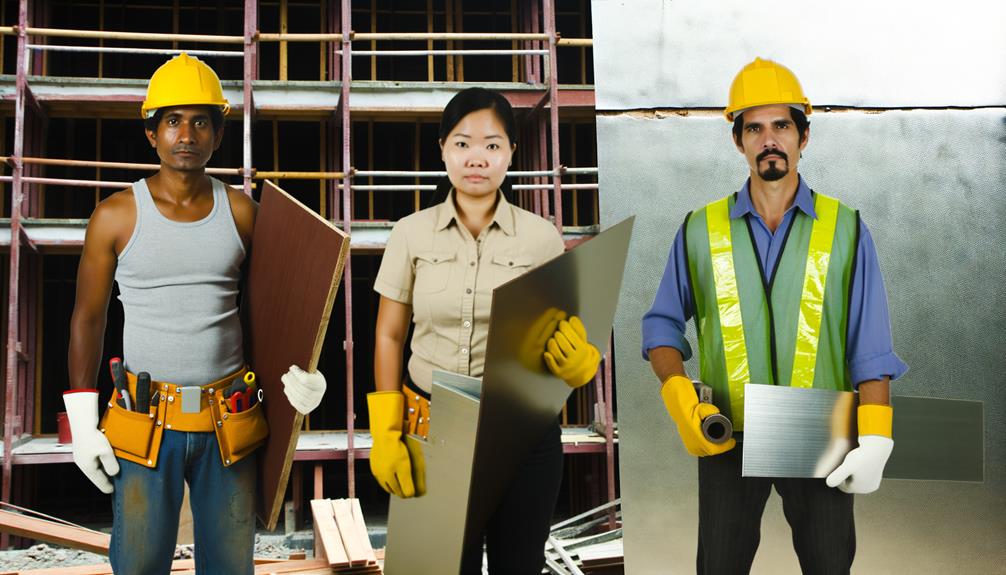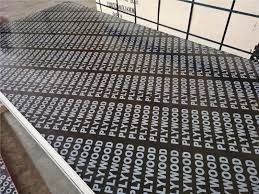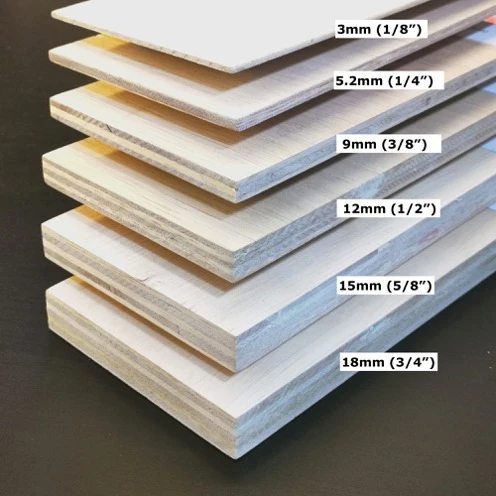hailand Wooden Formwork Procurement & Application Guide (2025)
Thailand is experiencing rapid growth in both infrastructure and real estate. In this wave of development, formwork plays a critical role in shaping concrete structures. From new high-rise apartments in Bangkok, residential communities in Chiang Mai, to industrial zones in the Eastern Economic Corridor (EEC), contractors need efficient, durable, and cost-effective solutions.
Although steel and aluminum formwork are durable, they are expensive and less flexible. In contrast, wooden formwork has become the most practical choice in Thailand due to its cost-efficiency, flexibility, and adaptability. Wooden formwork remains the dominant solution in bridges, housing projects, tunnels, and municipal construction.
This guide—based on China’s plywood supply chain and the latest export data—provides Thai contractors, traders, and distributors with a full overview of wooden formwork types, performance, prices, challenges, and procurement strategies.
1. Wooden Formwork Overview
1.1 What is Formwork?
Formwork is a temporary structure used to hold and shape fresh concrete until it hardens. Its quality directly affects concrete surface smoothness, accuracy of dimensions, and overall project efficiency.
Wooden formwork is the most widely used category, made from wood veneers or composite materials, pressed and coated for durability. It offers moderate weight, low cost, and easy cutting—making it suitable for Thailand’s fast-paced construction needs.
1.2 Importance in Thailand
Wooden formwork is widely used in:
- Housing projects: apartments, villas, shopping malls where flexibility and fast cutting are needed.
- Bridge & road projects: require strong, reusable film faced plywood.
- Tunnel & water projects: need excellent waterproof and moisture resistance.
- Temporary works: scaffolding platforms, site walkways, and support structures.
Thailand’s hot and humid climate puts higher demands on moisture resistance and reuse cycles. That’s why Chinese film faced plywood (black and brown film) dominates the Thai market.
1.3 Pros & Cons
Advantages:
- Lower cost compared to steel or aluminum formwork
- Flexible cutting and easy handling on site
- Stable supply from China as the main exporter
Disadvantages:
- Limited service life (typically 8–15 reuses)
- Can warp or mold in wet weather if not managed well
- Requires skilled site management to avoid concrete leakage

2. Types of Wooden Formwork
2.1 Standard Plywood Formwork
Made from poplar, birch, or pine veneers pressed together.
- Cost: Lowest
- Reuses: 3–6 cycles
- Application: small housing, short-term projects
- Weakness: poor waterproofing, easily warped in rainy season
2.2 Black Film Faced Plywood
Covered with a black phenolic film for waterproofing and smooth surface finish.
- Reuses: 8–12 cycles
- Application: housing, bridges, and roads
- Cost: higher than standard plywood, but still economical
Example: A Bangkok apartment project used 15mm black film plywood at THB 450–600 per sheet, achieving over 10 reuses.
2.3 Brown Film Faced Plywood
Made with heavier film paper for better durability and smoothness.
- Reuses: 10–15 cycles
- Application: bridges, metro, tunnel projects
- Cost: 10–15% higher than black film plywood
2.4 Special Plywood (Anti-slip, Double Film)
- Anti-slip plywood: good for working platforms and scaffolding
- Double-sided film: both sides covered, longer service life

3. Specifications & Technical Details
3.1 Common Sizes
- Standard size: 1220 × 2440 mm (4 × 8 feet)
- Thickness: 12mm, 15mm, 18mm, 20mm
15mm & 18mm: Most popular in Thailand, balancing strength and handling.
20mm+: Heavy-duty use in bridges and high-load structures.
3.2 Glue Types
- MR glue: low-cost, indoor or short-term use
- WBP glue: waterproof, ideal for Thailand’s rainy season
- Melamine glue: medium durability, 12–13 reuses
3.3 Film Paper
- 120g Black film: economical option
- 180–240g Brown film: high-end option for long service
Tip: Thai buyers often prefer 180g brown film plywood due to high humidity conditions.

4. Prices & Market Trends (2025)
According to trade data:
| Product Type | FOB Price (USD/m³) | Reference Price (THB/sheet) | Reuses | Features |
|---|---|---|---|---|
| Black Film Plywood (15mm) | 270–350 | ≈ THB 450–600 | 8–12 | Waterproof, smooth finish |
| Brown Film Plywood (18mm) | 320–400 | ≈ THB 550–700 | 10–15 | High durability, better surface |
| Standard Plywood | 200–250 | ≈ THB 250–350 | 3–6 | Low-cost, short-term use |
Market trend: Export price in 2024 was USD 397/m³ (CIF), a slight decrease compared to 2023. Good news for Thai buyers seeking cost savings.
5. How to Choose a Reliable Supplier from China
Sourcing high-quality wooden formwork from China can be highly profitable, but choosing the wrong supplier can lead to project delays, cost overruns, and quality issues. For Thai buyers, here is a practical guide to selecting a trustworthy Chinese partner.
5.1 Key Certifications to Look For
Do not just ask for a “quality certificate.” Always request to see copies of these specific certifications:
- ISO 9001: This is the baseline for a quality management system. It shows the factory has standardized production processes.
- FSC (Forest Stewardship Council): Crucial for projects requiring sustainable and legally logged wood. Many European and international projects mandate this.
- CE Marking: Indicates the product complies with European health and safety standards. It is a strong indicator of quality, even for the Thai market.
- CARB / EPA TSCA Title VI Compliance: Certifies that the plywood meets formaldehyde emission standards (E0, E1, E2). Essential for ensuring worker safety and indoor air quality.
- Test Reports from SGS, BV, or TÜV: Reputable third-party inspection reports on key parameters like Bending Strength, Formaldehyde Emission, and Boiling Water Resistance. A professional supplier will have these readily available.
Tip for Thai Buyers: Always ask for a Certificate of Origin (COO) to handle import customs clearance in Thailand smoothly.
5.2 How to Audit a Factory (Without Traveling)
You don’t always need to fly to China to verify a supplier. A serious supplier will provide:
- Factory Video Tour: Request a live video call (via WhatsApp/WeChat) for a real-time walkthrough of their production lines, warehouse, and quality control area. This is the most effective alternative to an on-site visit.
- High-Resolution Production Photos: Ask for pictures of the core materials (poplar/birch cores), the gluing process, and the hot-pressing machines. Blurry or generic photos can be a red flag.
- Client References & Project Cases: A reliable supplier will have examples of previous projects in Southeast Asia, especially in countries with climates similar to Thailand’s (e.g., Malaysia, Indonesia).
5.3 Understanding MOQ, Payment, and Negotiation
Minimum Order Quantity (MOQ):
- Standard MOQ: For a 20ft container (≈ 1,100 sheets of 18mm) or a 40ft container (≈ 2,200 sheets). This is common for most factories.
- Small-Batch Suppliers: Some trading companies or smaller factories offer MOQs as low as 300–500 sheets, perfect for trial orders or smaller projects. Expect a slightly higher unit price.
Payment Terms:
- Standard Terms: 30% T/T deposit, 70% balance against copy of Bill of Lading. This is the most common and secure method for both parties.
- Negotiation Point: For repeat orders, you can negotiate better terms, such as LC at Sight or a lower deposit percentage.
Price Negotiation:
- Focus on the FOB China port price (e.g., FOB Shanghai, FOB Qingdao). This makes cost comparison between suppliers fair.
- Remember: The cheapest offer is often the most expensive. Low prices usually mean lower-quality film, inferior glue, or mixed-wood cores that will warp in Thailand’s humidity.
5.4 Logistics and After-Sales Support
- Shipping: A good supplier will handle all documentation and arrange shipping to the main port in Thailand (Laem Chabang or Bangkok). They can recommend trusted freight forwarders.
- Warranty & Claims: Discuss the policy for handling defective products before you order. Understand the process for filing a claim if you discover issues upon arrival in Thailand.
- Technical Support: The best suppliers provide guidance on optimal use and maintenance to maximize the number of reuses in your specific Thai climate.
Conclusion for this Section: Choosing a supplier is not just about price. It’s about finding a long-term partner who guarantees stable quality, provides professional service, and offers reliable after-sales support. Investing time in this selection process will save you significant money and stress throughout your construction project.
6. FAQ for Thai Buyers
Q1: How many times can I reuse Chinese plywood?
Black film: 8–12 times, Brown film: 10–15 times, depending on site management.
Q2: Which glue should I choose?
Always choose WBP glue for Thailand’s rainy season. It prevents delamination.
Q3: How do I calculate real cost?
Compare price per sheet ÷ reuse times. Brown film may look expensive, but cost per use is often lower than standard plywood.
Q4: Can I order small batches?
Yes. Many suppliers offer MOQ from 300–500 sheets. For trial projects, this is practical.
6. Conclusion
For Thailand’s construction market, wooden formwork from China remains the most cost-effective and flexible option. By choosing the right thickness, film type, and glue, Thai contractors can save costs and improve efficiency. Whether you are working on housing, bridges, or infrastructure, film faced plywood offers the balance between price and performance.
For more details or direct sourcing, explore our formwork types and latest price trends sections above.



